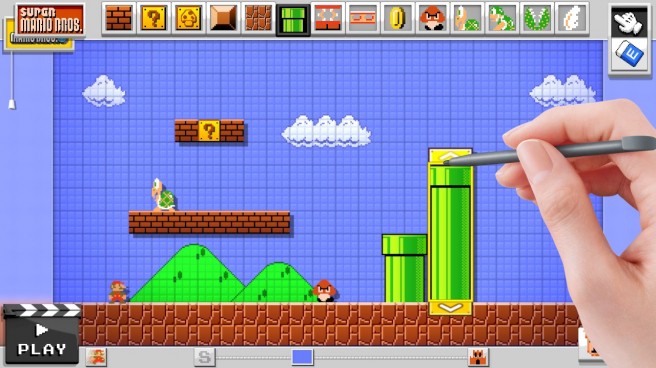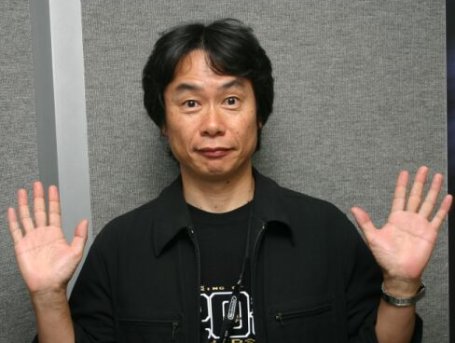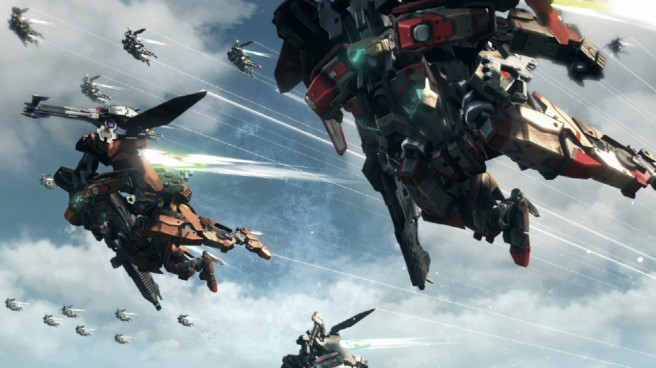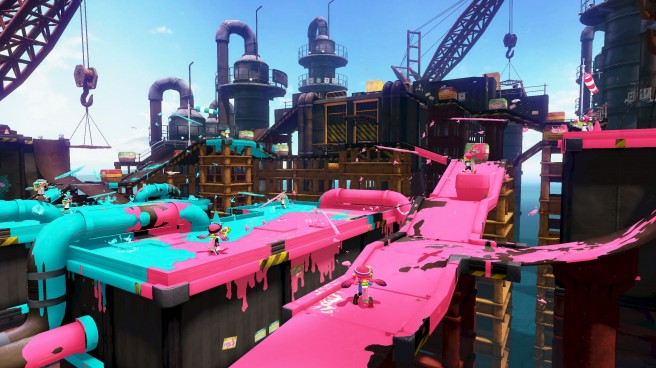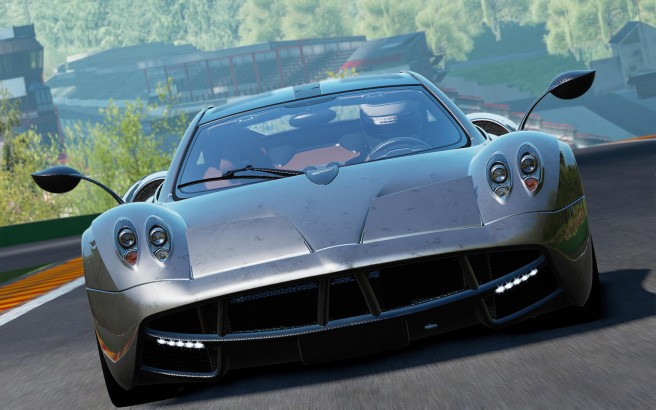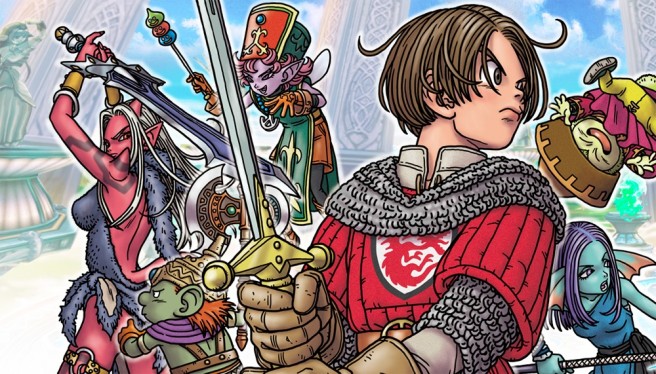Tezuka wants Mario Maker “to stimulate the imagination of the people playing it”
Posted on 11 years ago by Brian(@NE_Brian) in News, Wii U | 7 Comments
Takashi Tezuka’s number one goal with Mario Maker “is to stimulate the imagination of the people playing it.”
Tezuka spoke about the Wii U game with EDGE this month, and touched on a number of topics. When asked to comment on how the team is going to approach players sharing their creations, he said:
More: interview, Mario Maker, Takashi Tezuka, top
Miyamoto believes the gaming industry “has a long way to go”, wants Nintendo to always pursue new things
Posted on 11 years ago by Brian(@NE_Brian) in General Nintendo, News | 43 Comments
During Nintendo’s most recent shareholders meeting in July, Shigeru Miyamoto made a few comments about the games on display at E3.
“This year, the majority of what the other developers exhibited was bloody shooter software that was mainly set in violent surroundings or, in a different sense, realistic and cool worlds,” Miyamoto said at the time. “Because so many software developers are competing in that category, it seemed like most of the titles at the show were of that kind.”
In this month’s issue of EDGE, Miyamoto was asked to follow up on his comments. He stated, “I have not been fully satisfied with the inspirations that I have or that other people in the industry have in general.” Miyamoto also mentioned that industry trends are emphasized over “the creator’s individuality and uniqueness”, and that “the industry has a long way to go.”
Check out all of Miyamoto’s comments below – they’re quite interesting to say the least!
More: interview, Shigeru Miyamoto, top
Sales and fans will determine if Azure Striker Gunvolt gets a sequel
Posted on 11 years ago by Brian(@NE_Brian) in 3DS eShop, News | 9 Comments
Inti Creates has interest in making a sequel to Azure Striker Gunvolt. However, whether or not this actually happens in the future will be determined by sales of the first game and “how active and loud the fans are”.
Inti Creates CEO Takuya Aizu told Siliconera:
Obviously, as a developer, we put our heart and soul into Gunvolt, and so the idea of doing a sequel is exciting—but that’s a kind of high-level feeling we have right now.
In terms of ideas or core concepts we’d like to include in a potential sequel, we haven’t thought that far or deep yet. The cold, hard reality is, the key things that are going to determine whether there’s a sequel or not is how Gunvolt does in terms of sales and how active and loud the fans are about there being a sequel. If those two things are in place? Sure! We’d love to do it!
Xenoblade Chronicles X is laying the groundwork for Monolith’s HD development
Posted on 11 years ago by Brian(@NE_Brian) in News, Wii U | 42 Comments
Xenoblade Chronicles X is the first HD game from Monolith Soft. As such, executive producer Tetsuya Takahashi says the game is laying the groundwork for Monolith’s HD development “so as to not overreach ourselves and cause problems.”
Takahashi told EDGE this month:
“Xenoblade Chronicles X is the first HD project for Monolith Soft, so instead of setting a number of hard-to-achieve targets, we are working on steadily building up key skills. Our goal with this game is first to lay the groundwork for [our] HD game development, so as to not overreach ourselves and cause problems.”
Miyamoto on Splatoon’s visuals – needed to be “different from what other folks are doing”
Posted on 11 years ago by Brian(@NE_Brian) in General Nintendo, News, Wii U | 44 Comments
With Splatoon’s visual style, Nintendo wanted to do something “different” from the competition.
“Shooters have tended to become more realistic, but it’s not Nintendo’s way to do that,” legendary video game designer Shigeru Miyamoto told EDGE this month. “It’s [got] to be different from what other folks are doing.”
Elsewhere in the interview, Miyamoto touched on shooters in general. While Nintendo may not visit these types of games on a regular basis, Miyamoto said he likes their controls and he wouldn’t say that he’s not interested in the genre.
Miyamoto’s comments in full:
More: interview, Shigeru Miyamoto, Splatoon, top
Slightly Mad Studios explains Project CARS’ Wii U delay
Posted on 11 years ago by Brian(@NE_Brian) in News, Wii U | 21 Comments
Slightly Mad Studios has finally responded directly as to why the Wii U version of Project CARS was delayed.
In an interview with Eurogamer, creative director Andy Tudor explained that the team simply requires “a little more time” in order to ensure that “it’s of the same standard of all the other games.” Slightly Mad also wants to meet the high expectations of fans.
As far as the actual game is concerned, Project CARS is said to look “phenomenal” on Wii U. Tudor also praised Nintendo’s console, stating that it’s “quite good.”
Head past the break for all of Tudor’s comments.
Pokemon president and Katsuhiro Harada talk a bit about Pokken Tournament’s origins
Posted on 11 years ago by Brian(@NE_Brian) in General Nintendo, News | 1 Comment
Famitsu shares a little bit on Pokken Tournament’s origins this week as part of an interview with Bandai Namco’s Katsuhiro Harada and Pokemon president Tsunekazu Ishihara.
According to Harada, he approached Ishihara with a different idea after receiving the offer to collaborate. Ishihara, however, already had his mind made up.
As noted by Harada:
“At first, I offered a collaboration with a different title, but when my messenger returned [from Pokémon Company], he said ‘Mr. Ishihara wants to collaborate with Tekken.’ Not only that, but [Mr. Ishihara] had already settled on a title — the entire office was dumbfounded.”
Ishihara also said:
“I figured that if we’re going to make this, I wanted to team up with some place that had the best technical skills, so I was glad we were able to ask a development team of such high pedigree.”
Square Enix would “love to” bring Dragon Quest X overseas, why the game was made internally
Posted on 11 years ago by Brian(@NE_Brian) in News, Wii, Wii U | 7 Comments
Dragon Quest X hasn’t been released overseas yet. That’s not because of a lack of interest from Square Enix, though.
Dragon Quest executive producer Yuu Miyake and mobile producer Noriyoshi Fujimoto, speaking with Siliconera, said the following when asked if Square Enix would like to bring the game over: “We’d love to do it! Love to.”
Miyake then elaborated:
Inafune says Mighty No. 9 is more inspired by Onimusha than Mega Man
Posted on 11 years ago by Brian(@NE_Brian) in 3DS eShop, News, Wii U eShop | 0 comments
Mighty No. 9 has drawn countless comparisons to Mega Man since its initial reveal. However, you might be interested to know that the game was actually more inspired by Onimusha than Capcom’s series.
Mighty No. 9 project lead Keiji Inafune recently told Siliconera:
“Any time I do a new production, whether it’s Mega Man game I made ten years ago or Mighty No. 9 now, you look at It based on what you’re trying to do at the time. There’s never really been something I couldn’t put in a Mega Man game that I’m now putting into Mighty No. 9.”
“That being said, the sort of key areas we’ve drawn inspiration from—and this may be surprising for some people to hear—rather than Mega Man, it’s Onimusha.”
“In Onimusha, you had a system where the end user would be put into a scenario where they had to either suck in a soul to get the soul bonus, or attack an oncoming enemy. That risk represented a moment-to-moment gameplay scenario. What we wanted to do with Mighty No. 9 was include an absorption dash, where you can shoot an enemy from afar to make him weak, and dash through him to gain his power. Alternatively, you can be safe, and shoot him until he’s dead.”
“Moreover, you could choose to bring him to the brink of death so that you can absorb that enemy at 100% to get the highest score. For each even average enemy, that moment to moment risk-reward scenario is always there, and that always represents the adrenaline rush for the end user.”
More: Capcom, interview, Inti Creates, Keiji Inafune, Mighty No. 9
Pokken Tournament devs – Mega Evolutions, amount of Pokemon, development 30% done, more
Posted on 11 years ago by Brian(@NE_Brian) in News | 6 Comments
This week’s issue of Famitsu has a new interview about Pokken Tournament with Pokemon Company CEO and president Tsunekazu Ishihara, Tekken series chief producer Katsuhiro Harada, and Soulcalibur producer Masaaki Hoshino. You can find some excerpts after the break (courtesy of Siliconera).
